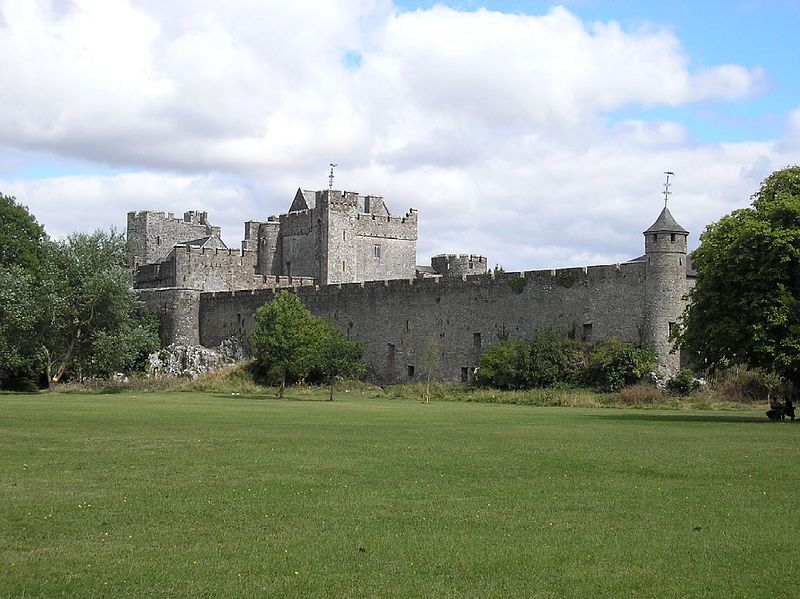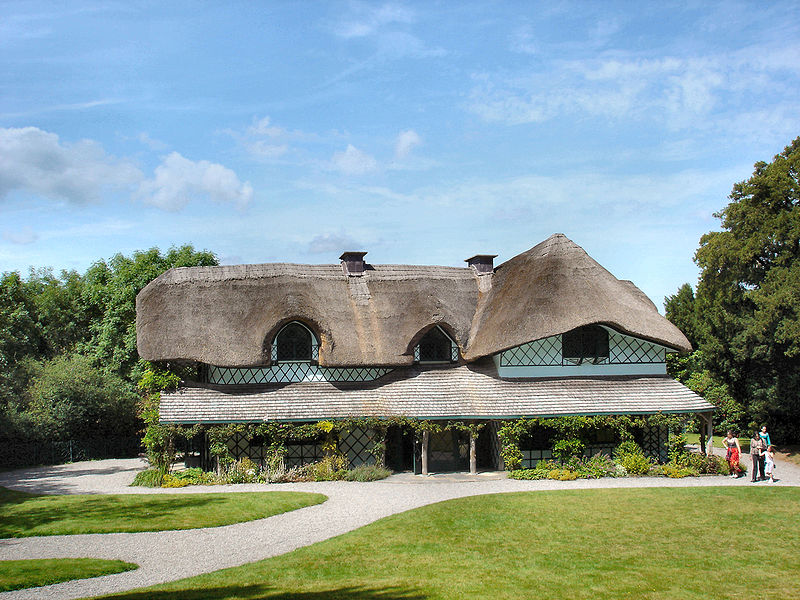SIR CÆSAR COLCLOUGH, 2nd Baronet (1624-84), of Tintern Abbey, who wedded Frances, daughter of Sir William Clarke, and had issue,
CÆSAR;
Margaret.
He was succeeded by his only son,
SIR CÆSAR COLCLOUGH, 3rd Baronet (c1650-87), Deputy Lieutenant-Governor of County Kilkenny, 1689, who dsp, when the title expired, and the estates devolved upon his only sister,
MARGARET COLCLOUGH, who duly became heiress to her brother of his great estates.
She married firstly, in 1673, Robert Leigh, of Rosegarland, who thereupon assumed the surname of
COLCLOUGH; and secondly, in 1696, John Pigott, of Kilfinney, who also assumed the surname of
COLCLOUGH, and died in 1717.
She
dsp 1723, when she was succeeded at Tintern by her kinsman and heir male,
CÆSAR COLCLOUGH (1696-1766), of Tintern Abbey (eldest son of Dudley Colclough, of Duffrey Hall), Colonel, Wexford Militia, MP for County Wexford, 1727-60 and 1761-6, who wedded firstly, in 1717, Frances Muschamp, daughter of Sir Thomas Vesey Bt, of Knapton, Lord Bishop of Ossory, by whom he had an only daughter, Margaret, who died young.
He married secondly, in 1721, Henrietta, daughter of Agmondisham Vesey, of Lucan, County Dublin, and had further issue,
Cæsar, b 1722; dspvp;
Vesey (1724-45), father of VESEY;
Dudley, dspvp;
Agmondisham Vesey;
Adam, of Duffrey Hall; father of MARY GREY WENTWORTH;
Thomas (Rev);
Richard;
Frances; Anne; Harriett; Mary; Margaret; Lora.
Colonel Colclough was succeeded by his grandson,
VESEY COLCLOUGH (1745-94), of Tintern Abbey, MP for County Wexford, 1766-90, High Sheriff of County Wexford, 1767, who espoused, in 1765, Katherine, daughter of John Grogan, of Johnstown, County Wexford, and had issue,
Cæsar, his heir;
John, MP for County Wexford;
Vesey.
Mr Colclough (who was known in County Wexford as "Sir Vesey"), was succeeded by his eldest son,
CÆSAR COLCLOUGH (1766-1842), MP for County Wexford, 1806, who married, in 1818, Jane Stratford, daughter of John Kirwan, Barrister, and had no issue.
He died in 1842, when Tintern Abbey and the estates descended to (and after some litigation on the part of his widow), and were settled on his second cousin and heiress-at-law,
MARY GREY WENTWORTH ROSSBOROUGH-COLCLOUGH (1811-84), of Tintern Abbey, only surviving daughter and heiress of Cæsar Colclough, of Duffrey Hall.
She succeeded her father in 1822, and her kinsman, 1842.
Mary Colclough wedded, in 1848,
JOHN THOMAS ROSSBOROUGH JP DL, of Mullinagood, County Longford, eldest son of John Rossborough, of Nicholson's Court and Clancaulfield House, County Longford, and grandson of Hugh Rossborough, of Mullingoan, County Fermanagh.
Mr Rossborough assumed, in 1853, the additional surname and arms of
COLCLOUGH.
He died in 1869; and Mary, Mrs Rossborough-Colclough, died in 1884, leaving issue,
LOUISE MARIA SUSANNA COLCLOUGH;
Susanna Frances Julia; Mary Grey Wentworth Fanning; Belinda Powell Leech Trumble.
The eldest daughter,
LOUISE MARIA SUSANNA COLCLOUGH BIDDULPH-COLCLOUGH, of Tintern Abbey, succeeding her mother in 1884, married, in 1885, Franc Digby Biddulph, Captain, 3rd Middlesex Militia (who assumed the surname and arms of
COLCLOUGH, 1886), youngest son of Francis Wellesley Marsh Biddulph, of Rathrobin.
She died in 1912, having by him had issue,
CÆSAR FRANC THOMAS BICKERSTAFF PLANTAGENET (1886-88);
Lucy Wilmot Maria Susanna Biddulph, born 1890.
The only daughter,
LUCY WILMOT MARIA SUSANNA BIDDULPH-COLCLOUGH (1890-1984), of Tintern House, presented Tintern Abbey to the Irish state in 1958 (excluding lands).
TINTERN ABBEY, situated on the west shore of Bannow Bay, County Wexford, was one of the most powerful Cistercian foundations in the south-east of Ireland until the Dissolution of the Monasteries in 1536.
The first Cistercian foundation in Ireland, at Mellifont, County Louth, in 1142, was part of sweeping reforms which took place in the Irish Church in the 12th century.
The early Cistercians, who had their origins in the monastery of Citeaux in France, were dedicated to a simple life of prayer and manual labour.
By 1169, when the Anglo-Normans arrived in Ireland, there were already fifteen Cistercian houses in Ireland.
In 1200, William Marshal, Earl of Pembroke, set sail for Ireland on his first visit as Lord of Leinster. Threatened with shipwreck, he vowed to found an abbey wherever he could safely land.
On reaching safety in Bannow Bay, he redeemed his vow bequeathing about 9,000 acres of land for a Cistercian abbey.
Consequently, Tintern Abbey, sited on a gentle south-facing slope overlooking Tintern stream, is sometimes called Tintern de Voto, 'Tintern of the vow.'
Once established, the abbey was colonised by monks from the Cistercian abbey at Tintern in Monmouthshire, of which William Marshal was also patron.
Following its foundation, Tintern acquired large tracts of land in County Wexford and, at the Dissolution of the Monasteries, appears to have been the third richest Cistercian abbey in Ireland (after St Mary's in Dublin and Mellifont).
Shortly after, Tintern Abbey and its lands were granted to Anthony Colclough from Staffordshire, an officer in
HENRY VIII's army.
The Colclough family extensively modified the abbey church, converting the crossing tower and later, the nave, chancel and Lady Chapel to domestic quarters.
In the 18th century, Sir Vesey Colclough built many of the fine battlemented walls seen around the abbey today.
In the 1790s, John Colclough converted the nave into a residence of neo-Gothic style.
He also established a flour mill, the ruins of which stand on the south bank of the stream close to the upper bridge.
At this period also, a thriving weaving industry had developed in Tintern village, located across the stream south-west of the abbey.
Following John's death, his brother Caesar inherited the estate and, shortly after 1814, built the village of Saltmills to replace the old village of Tintern which was then demolished.
The final member of the Colclough family to reside at Tintern was Miss
Lucy Wilmot Maria Susanna Biddulph Colclough, who presented the Abbey to the Irish nation in 1958.
Conservation and consolidation works started at Tintern in the early 1980s and archaeological excavations between 1982-94 exposed many of the features of the original Cistercian abbey.
Constructed to the standard Cistercian plan, the abbey church was located to the north of an enclosed cloister garth, which was surrounded on all sides by covered walks and a sequence of domestic buildings.
First published in August, 2012.

























